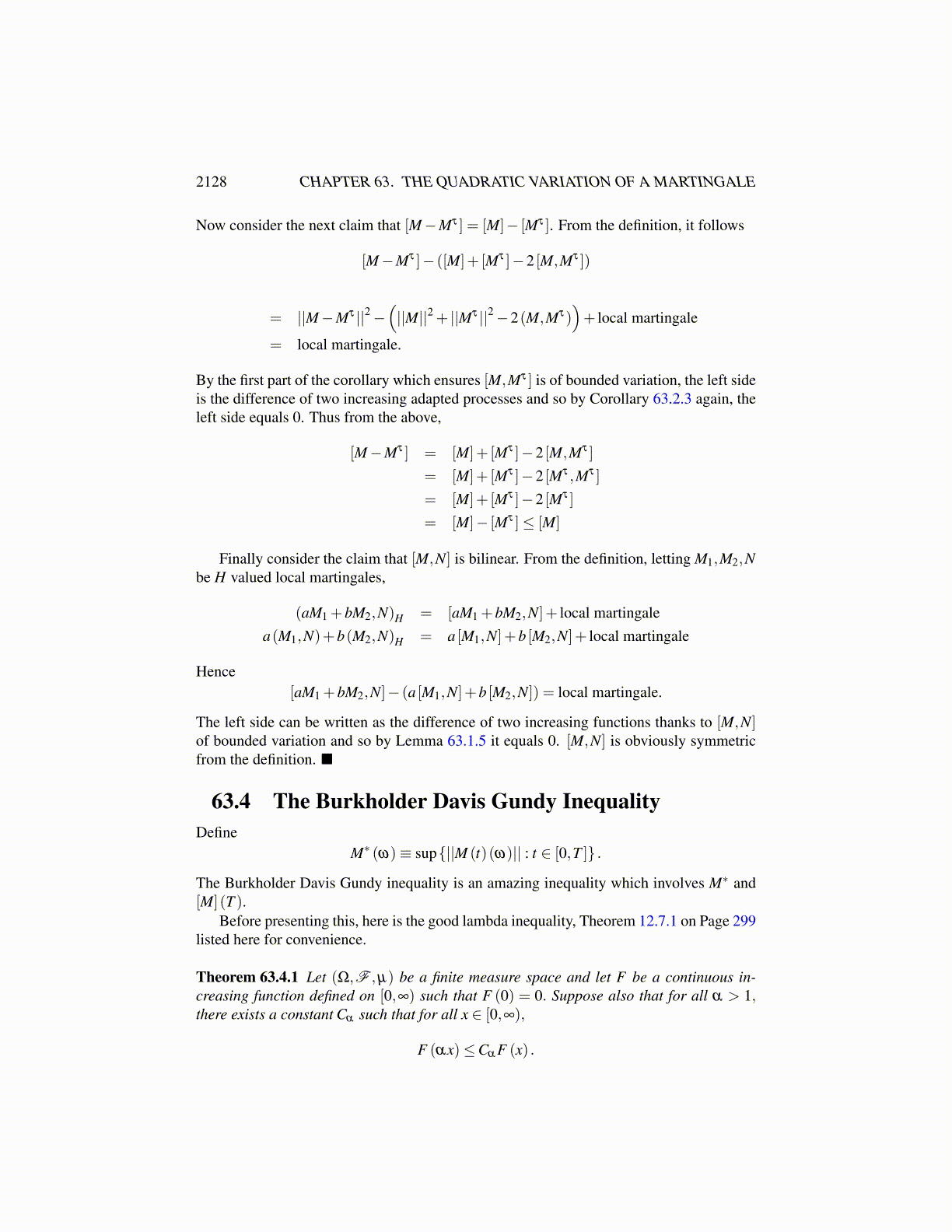
2128 CHAPTER 63. THE QUADRATIC VARIATION OF A MARTINGALE
Proof: From the definition of covariation,
[M] = ||M||2−N1
[M,M] =14([M+M]− [M−M]) =
14
(||M+M||2−N2
)= ||M||2− 1
4N2
where Ni is a local martingale. Thus [M]− [M,M] is equal to the difference of two in-creasing continuous adapted processes and it also equals a local martingale. By Corollary63.2.3, this process must equal 0. Now consider the second claim.
[M,N] =14([M+N]− [M−N]) =
14
(||M+N||2−||M−N||2 +N
)= (M,N)+
14N
where N is a local martingale.
Corollary 63.3.3 Let M,N be two continuous local martingales, M (0) = N (0) = 0, as inProposition 63.2.5. Then [M,N] is of bounded variation and
(M,N)H − [M,N]
is a local martingale. Also for τ a stopping time,
[M,N]τ = [Mτ ,Nτ ] = [Mτ ,N] = [M,Nτ ] .
In addition to this,[M−Mτ ] = [M]− [Mτ ]≤ [M]
and also(M,N)→ [M,N]
is bilinear and symmetric.
Proof: Since [M,N] is the difference of increasing functions, it is of bounded variation.
(M,N)H − [M,N] =
(M,N)H︷ ︸︸ ︷14
(||M+N||2−||M−N||2
)
−
[M,N]︷ ︸︸ ︷14([M+N]− [M−N])
which equals a local martingale from the definition of [M+N] and [M−N]. It remains toverify the claim about the stopping time. Using Corollary 63.2.6
[M,N]τ =14([M+N]− [M−N])τ